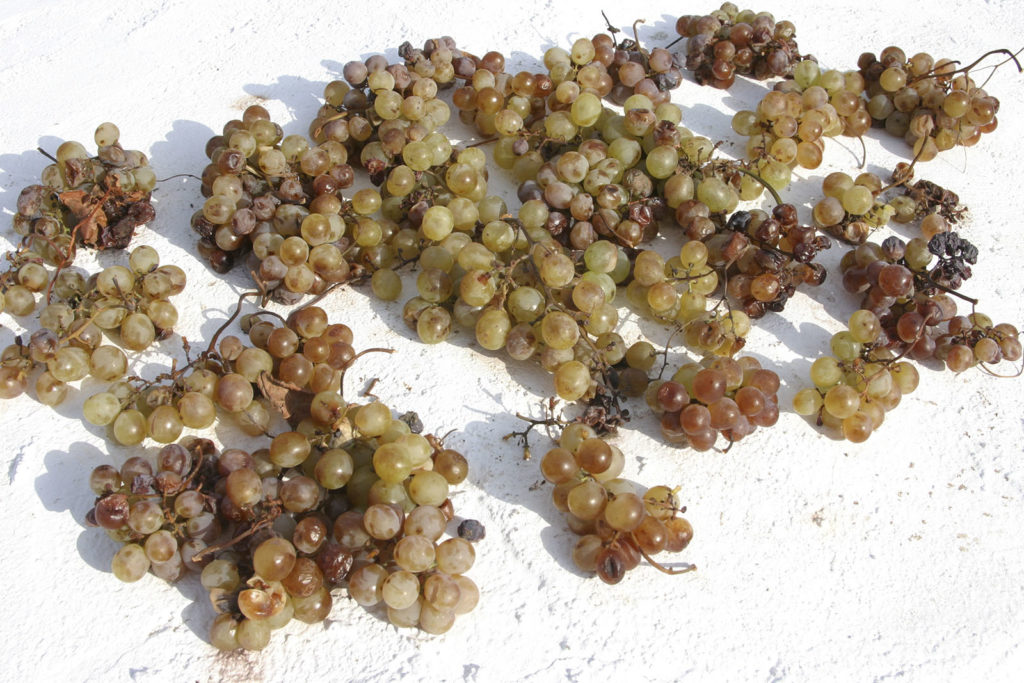The name of this wine comes from Monemvasia, a Greek town in the southern Peloponnese. According to other versions, the term instead derives from Malta, where the production originally began. The Romans transported the Malvasia in amphorae to the capital, where the emperors were fond of it. In the Middle Ages, Malvasia spread to England, and soon throughout Europe. Malvasia is a grape variety and one of the oldest, together with Moscato.
In the Aeolian version, in particular from Salina, the vine gives a nice amber wine with a sweet taste.
Malvasia delle Lipari DOC, with 95% of production concentrated in Salina, is a sweet wine that comes from drying the grapes. Once harvested, the malvasia grapes are put on “
cannizze
” and left to dry for 1 or 2 weeks under the sun.

This way, the grape loses most of its water and increases its sugar residue. The grapes are then pressed and left to ferment. The result is a sweet but fresh wine that is not cloying, with an amber colour and alcohol content between 13 and 15 percent. Malvasia is enjoyed cool so it is best kept in the fridge before serving.
In cooking, this wine is used as is, accompanied by desserts, but also more creatively, for example combined with stuffed squid.